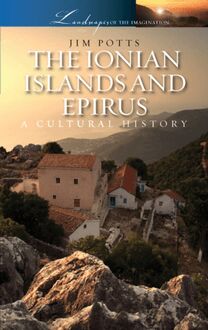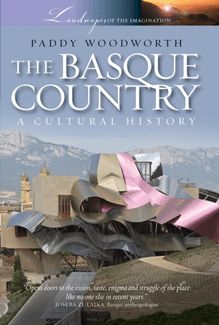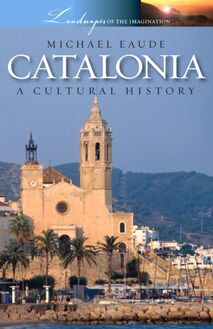Catalonia - A Cultural History , livre ebook
162
pages
English
Ebooks
2011
Vous pourrez modifier la taille du texte de cet ouvrage
Obtenez un accès à la bibliothèque pour le consulter en ligne En savoir plus
Découvre YouScribe en t'inscrivant gratuitement
Découvre YouScribe en t'inscrivant gratuitement
162
pages
English
Ebooks
2011
Vous pourrez modifier la taille du texte de cet ouvrage
Obtenez un accès à la bibliothèque pour le consulter en ligne En savoir plus
Publié par
Date de parution
12 octobre 2011
Nombre de lectures
2
EAN13
9781908493248
Langue
English
Poids de l'ouvrage
1 Mo
Publié par
Date de parution
12 octobre 2011
Nombre de lectures
2
EAN13
9781908493248
Langue
English
Poids de l'ouvrage
1 Mo
Title Page
CATALONIA
A Cultural History
by
Michael Eaude
Publisher Information
First published in 2007 by
Signal Books Limited
36 Minster Road Oxford OX4 1LY
www.signalbooks.co.uk
Digital edition converted and distributed in 2011 by
Andrews UK Limited
www.andrewsuk.com
© Michael Eaude, 2007
The right of Michael Eaude to be identified as the author of this work has been asserted by him in accordance with the Copyright, Design and Patents Act, 1988.
All rights reserved. The whole of this work, including all text and illustrations, is protected by copyright. No parts of this work may be loaded, stored, manipulated, reproduced or transmitted in any form or by any means, electronic or mechanical, including photocopying and recording, or by any information, storage and retrieval system without prior written permission from the publisher, on behalf of the copyright owner.
Cover Design: Baseline Arts
Art & Production: Devdan Sen
Cover Images: © Andrew Holt/Alamy; Marisa Asensio
Photography: All photos by Marisa Asensio, except p.i Carmen Martínez Banús/istockphoto; pp.x, 25 Rafael Laguillo/istockphoto; p.11 Caroline Beecham/istockphoto; p.157 Lillis Werder/istockphoto; p.178 Chris Schmidt/istockphoto. Please note page numbers refer to position in the printed version of this title.
Preface and Acknowledgements
I first became aware of Catalonia as a country that had a specific identity apart from Spain on 9 April 1973. The moment is fixed in my mind. I had gone to see Antoni Turull, Lecturer in the Spanish Department at Bristol University, with a view to attending his course on Cuban literature. This was our first meeting. Antoni, white hair straggling to his shoulders though he was only forty, greeted me with what I came to know as his characteristic warm extravagance: “Our great Picasso is dead.” That day I was made aware of three things: that Catalonia was a nation; that Catalans could legitimately claim Picasso as a wonderful adopted son; and that Catalan was a rich language and taught in some British universities, such as Bristol. Antoni was one of those pioneer teachers. He continued trying to educate my ignorance on our occasional meetings until his early death in January 1990.
I am grateful, too, to my other early Catalan friends, Rosa Blanch and Toni Tulla, whose mother and then sister, Assumpció, ran the beautiful, old-fashioned chess bar, the Oro negro, in Barcelona’s Carrer Aribau. Rosa and Toni kindly had me to stay in Barcelona on several occasions, including stressful weeks towards the very end of the dictatorship. Then activists in what was quite the best of the Catalan radical groups, the LCR, “la Lliga”, they explained Catalan politics to me and introduced me to embotits and the beautiful music of Lluís Llach. The sound of 1975 and the death of Franco are captured for me in Llach’s intimate and soaring voice singing that allusive political anthem, Voyage to Ithaca: Més lluny, sempre molt més lluny... Further, always much further on...
I would like to thank, too, the following who generously helped me on specific questions concerned with this book: Andy Durgan, Jude Egan, David C. Hall, Stephen Hayward, Vicky Hayward, Carol O’Brien, John Payne, Gabriel Sempill, Paddy Woodworth and Simon Wynne-Hughes. All errors are, of course, my fault and responsibility.
I am particularly grateful to Marisa Asensio, who encouraged me and is responsible for most of the photographs.
Introduction - Thoroughfare and Nation
Many foreigners visit Catalonia today for art. Its capital, Barcelona, has risen in the last twenty years to stand alongside Venice or Paris as one of Europe’s great destinations for cultural breaks. Catalonia’s architecture, combining medieval Romanesque and twentieth-century Art Nouveau, is an experience difficult to find elsewhere. And Salvador Dalí, despite his complexity and sexual explicitness, is an extremely accessible and popular painter.
Architecture and painting give Catalonia its prestige. Most visitors, though, come for cheap alcohol and sun holidays. Millions are drawn to the coastal beaches and towns. More Britons know the Costa Brava than Paris or Rome. A linked attraction today is the reputation of Catalonia as a place to live well, with great bars in the beautiful surrounds of Barcelona’s Born, mestissa music, famous and original food. It is the modern version of the Latin poet Martial’s dream of Tarragona: here we know how to live, not too hot, not too cold, with sea and mountains, working hard yet knowing how to relax...
Catalans often refer to their own country as a terra de pas, a place people pass through, a thoroughfare. It is a comforting view of the homeland. It implies that they are open, a mix, with people passing through down the centuries, each leaving their traces behind. This feeling of being a terra de pas is represented most dramatically by Josep Maria Sert’s startling paintings in the cathedral of Vic, Catalonia’s religious capital, of pagan Hannibal’s elephants, which passed through 2,200 years ago. It is also reflected in the melting-pot of Catalan food, fusing Italian, French and Spanish styles into an original cuisine.
Catalans counterpose the terra de pas to more fundamentalist views of identity, such as that in the Basque Country, often evoked as moulded by remote valleys uncontaminated by outsiders; or of the fierce Castilian tableland in the centre of Spain, freezing in winter and scorched in summer.
There is little genetic nationalist pride in Catalonia; all those who live and work in Catalonia, and ran the slogan of Jordi Pujol, Catalonia’s first elected post-Franco president, are Catalans. The Catalan language is the distinguishing feature of Catalan nationalism, and anyone who comes and lives here can and should learn the language. Thus the definition of Catalonia as a terra de pas is transferred easily into a complacent modern view of an easy and hospitable people welcoming newcomers into a tolerant, liberal country. The terra de pas also implies that the country is a terra d’acolliment, a land of welcome.
The story, of course, is never as simple as people’s views of their best selves. Africans and Asians today, picking fruit in Lleida for two scorched months a year, do not feel welcomed, but exploited. Many of the migrants to Catalonia, driven off the land by famine in other parts of Spain during the twentieth century, did not feel that working for rockbottom wages in a Catalan factory was much of a welcome. Nevertheless, signalling the strength of Catalan identity, and to the credit of both the migrants and indigenous Catalans, in the 1960s and 1970s they united in a huge movement of unions and residents’ associations against the dictator Franco. The immigrants recognized the justice of the demand for Catalonia’s national rights.
There is another side to the terra de pas, chillingly posed by Claudio Magris, writing about Romania: “The evil is that of having too much history, being a crossroads, or at least an optional stop on the route of universal history, along which the slaughterhouses work overtime even in the minor centres.” This certainly applies to Catalonia, the minor centre squeezed between two major states, France and Spain. The violence of its history can be envisaged dramatically on the great hill on which the cathedral of Catalonia’s main inland city, Lleida, is built. Around the cathedral still lies the crushed rubble where the old town was destroyed after Spanish conquest in 1714 and the citadel of the occupiers was raised. Then this latter was itself sacked by French invasion in 1810.
Present-day Catalonia’s peaceful feel and the apparent calm and sense of its people belie this particularly violent and bloody history. Its repeated attempts and failure to become an independent nation state have led to wars and centuries of suppression, culminating in the ten-week siege of Barcelona in 1714 and subsequent suppression of all national rights, and in Franco’s attempt to wipe out Catalan identity after 1939.
From the nineteenth century onwards Catalonia’s industrial revolution made it the richest and most developed part of the Spanish state, leading also to the world’s biggest anarchist movement and, in 1936, to what Andreu Nin called “a deeper revolution than Russia in 1917”. Much of this book will examine the great artists whom modern Catalonia has produced, but none of them can be understood without reference to these linked struggles: the fight of an oppressed nation for its national rights and the fight of a militant working class for social justice.
The 1936 revolution attracted George Orwell to Barcelona. His classic, Homage to Catalonia, a hymn to socialist revolution, has done more than any other book to make English-speakers aware of Catalonia. No-one actually wants to experience a revolution on their holidays, but it is fascinating to reflect in Barcelona’s comfort on the idealism and conflict of the 1930s.
***
The book is divided into three sections. It starts at the frontier town of Portbou, a terra de pas and a good place for a monument that reminds us of the slaughterhouses of history. The description of Portbou goes back (with Stephen Spender) to the Spanish Civil War, an event that still stirs many visitors to Catalonia, and (with Walter Benjamin) to the post-war period that still underlies Catalan politics today. The 1939 victor of that war, Francisco Franco, ruled Spain until 1975, long after his contemporaries and sponsors, Hitler and Mussolini, had died violently. I return to the Civil War in later chapters, but the first sec






